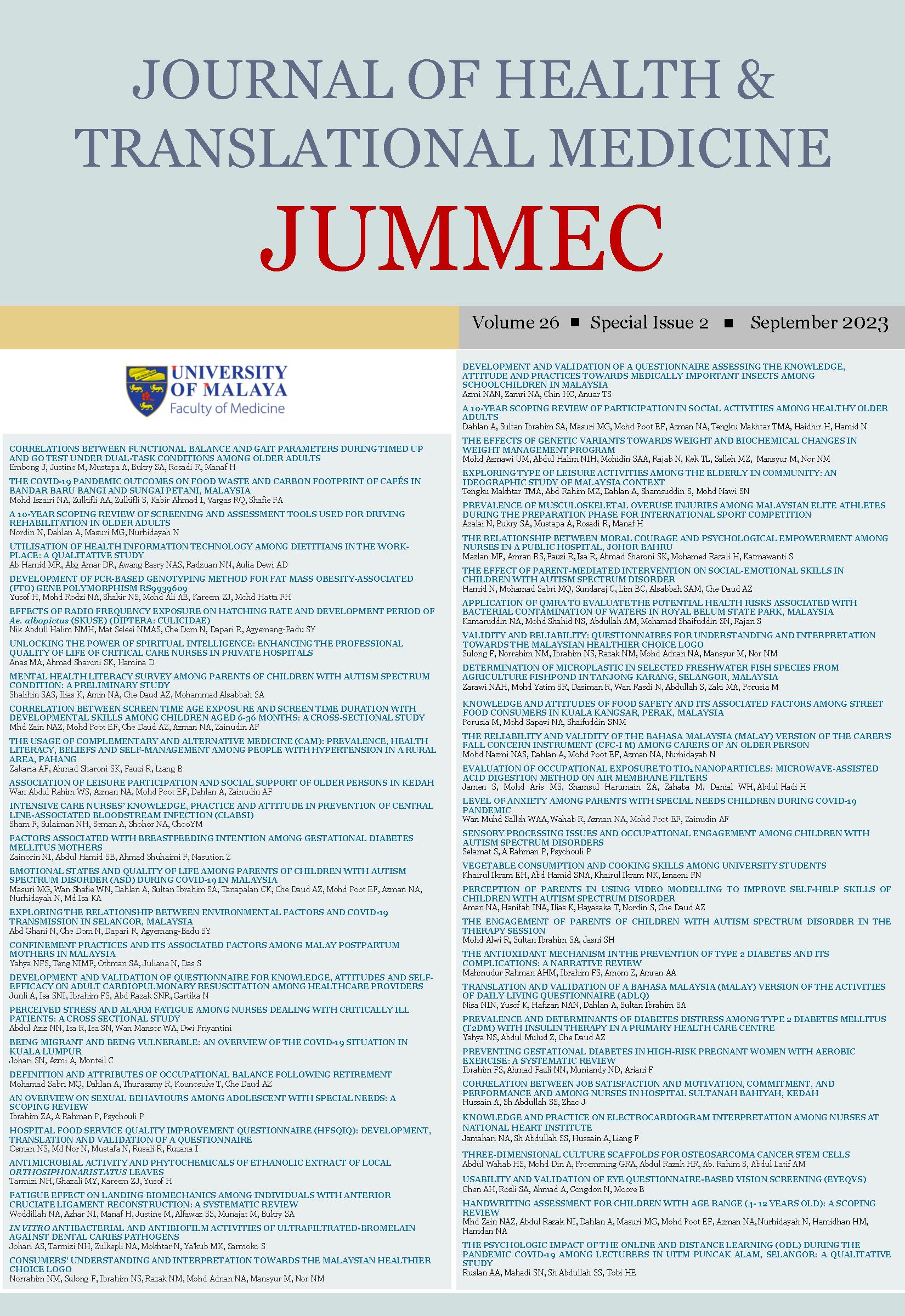CORRELATIONS BETWEEN FUNCTIONAL BALANCE AND GAIT PARAMETERS DURING TIMED UP AND GO TEST UNDER DUAL-TASK CONDITIONS AMONG OLDER ADULTS
Received 2023-07-07; Accepted 2023-08-22; Published 2023-09-15
DOI:
https://doi.org/10.22452/jummec.sp2023no2.1Keywords:
Aged, Attention, Gait, Postural Control, MalaysiaAbstract
The combination of physical, cognitive, and sensory challenges can make outdoor walking difficult for older adults.
This study aimed to determine whether the gait parameters during the Timed Up and Go (TUG) test under dual-task
conditions correlate with the functional balance level. A total of 255 older persons participated in this cross-sectional
study. Functional balance was assessed using the Berg Balance Scale (BBS) before the TUG test. The TUG test was
conducted under single- and two dual-task conditions (dual-motor and dual-cognitive). The time and number of steps were used to quantify gait parameters. Spearman’s rank correlation coefficient was used to assess the relationship among variables. The gait parameters (time and number of steps) of the TUG test were significantly different between task conditions (both, p = 0.001). Post hoc analysis with the Wilcoxon signed-rank test showed that the gait parameters in dual-motor and dual-cognitive tasks were significantly longer than in single-task conditions (p = 0.001). A strong negative rank correlation was found between the time and the number of steps taken to complete the single task condition and functional balance (p = 0.001). There was a low negative correlation between the time taken to complete the dual-motor task and dual-cognitive task conditions and functional balance. These findings suggest that functional balance may be an influential domain of successful dual-task TUG in older adults.
Downloads
Downloads
Published
Issue
Section
License
All authors agree that the article, if editorially accepted for publication, shall be licensed under the Creative Commons Attribution License 4.0 to allow others to freely access, copy and use research provided the author is correctly attributed, unless otherwise stated. All articles are available online without charge or other barriers to access. However, anyone wishing to reproduce large quantities of an article (250+) should inform the publisher. Any opinion expressed in the articles are those of the authors and do not reflect that of the University of Malaya, 50603 Kuala Lumpur, Malaysia.


